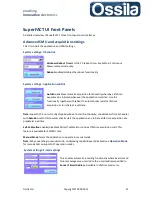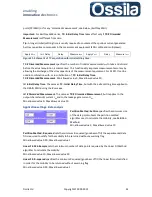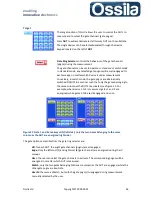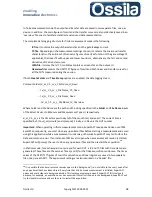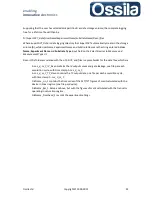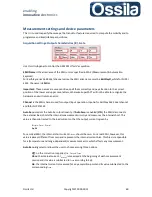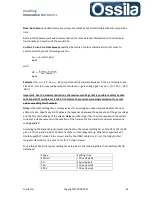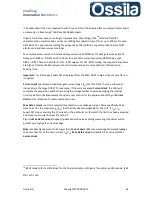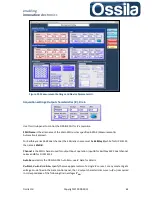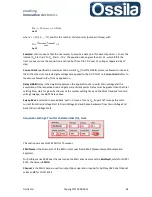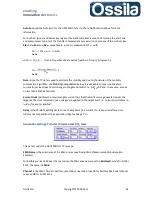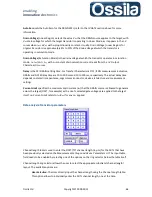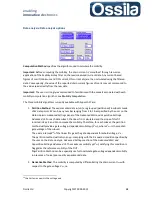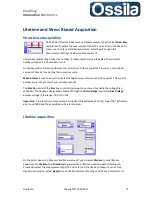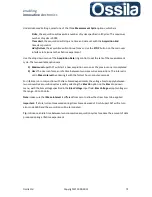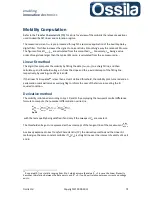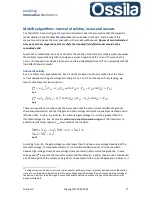
enabling
innovative
electronics
Ossila Ltd
Copyright © 2009-2015
64
,
Eq. 22
where
and
N
is the number of data points (number of steps) with
Eq. 23
Example:
Let us suppose that the User wants to acquire a data point for each steps ΔV
DS
= 1 over the
interval V
DS
Start =0 V to V
DS
Start = -10 V, the equation above gives then
N
= 11, which fulfils the
User’s request since the acquisition is carried out from 0 to 10 V over
11 voltages
separated by 1 V
step.
Current Limit
specifies the maximum drain current (
I
DS
) that the DRAIN source is allowed to induce in
the DUT as the User’s selected gate voltages are applied to the DUT itself, i.e.
Current Limit
refers to
maximum allowed
I
DS
(
V
DS
) for any applied
V
GS
.
Delay DRAIN
Delay is the dwell time between the application of a specific drain voltage and the
acquisition of the respective drain and gate current data points. Delay must be greater than the total
settling time, which is given by the sum of the system settling time and the DUM transient for drain
voltage sweeps, see GATE Delay above.
Sweep Back
is selected to ‘sweep back’ each I-V curves: for any
V
GS
, SuperFACT sweeps the drain
current from Drain Voltage Start to Drain Voltage End and hence backward from Drain Voltage End
back to Drain Voltage Start.
Acquisition settings: Transfer characteristics (IV), Gate
This section serves as GATE SMU for TC sweeps
SMU Name
is the alias name of the SMU unit as specified in MAX (Measurement & Automation
Explorer).
For Keithley series 26XX dual channel series, the SMU alias name must be
KeithleyO
, while for NI PXI
4132, the name is
SMUA
.
Channel
is the SMU channel used for output/input operation. Input
a
for Keithley 26XX dual channel
series and
0
for NI PXI 4132.


